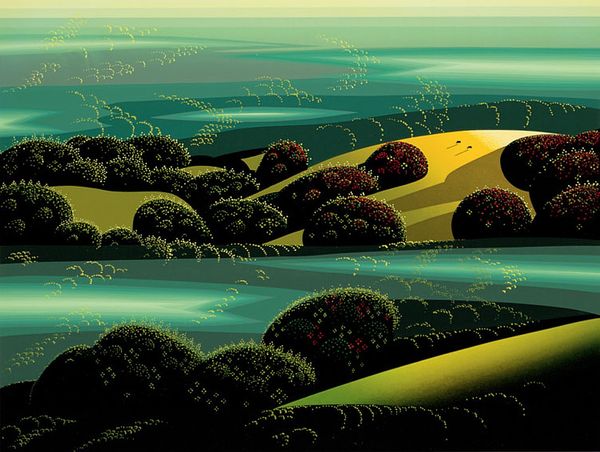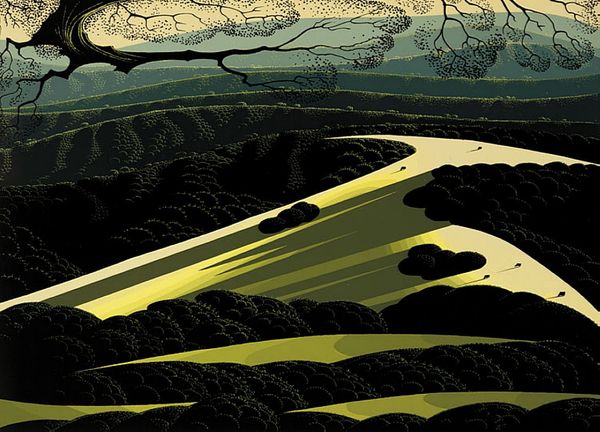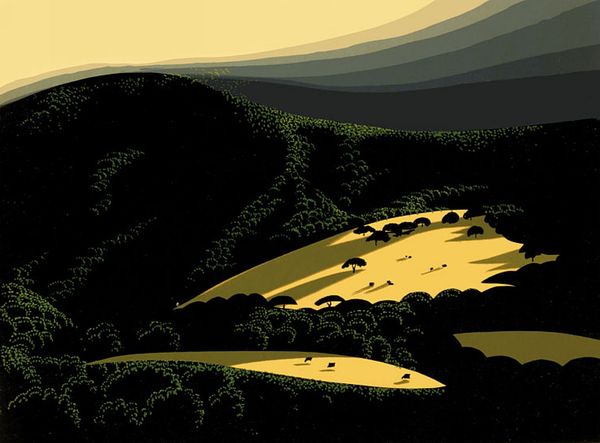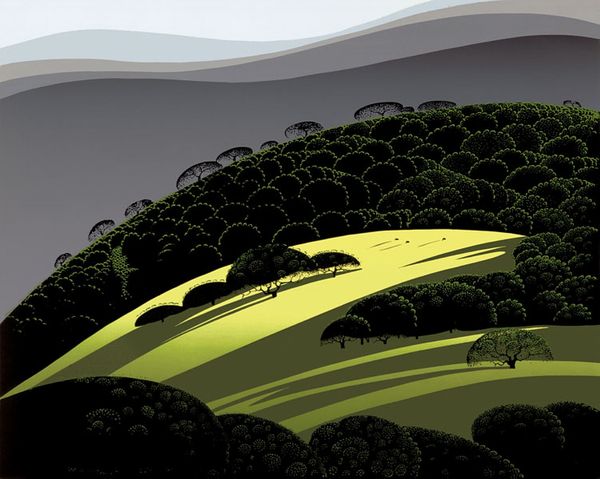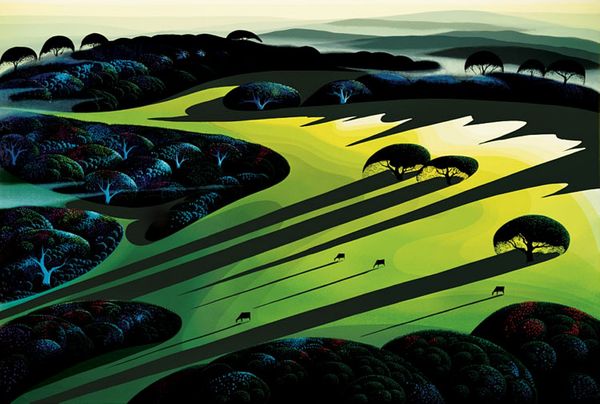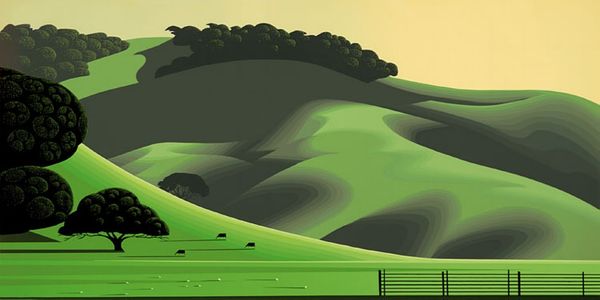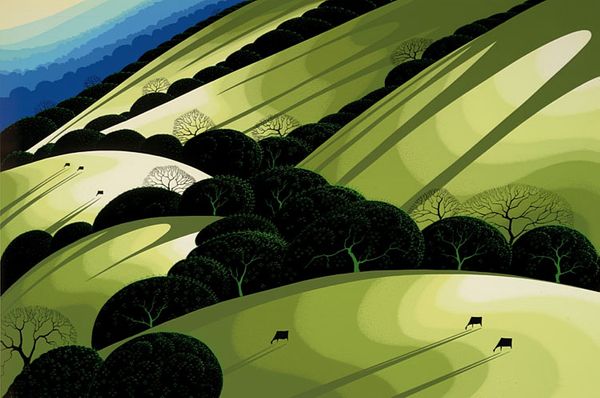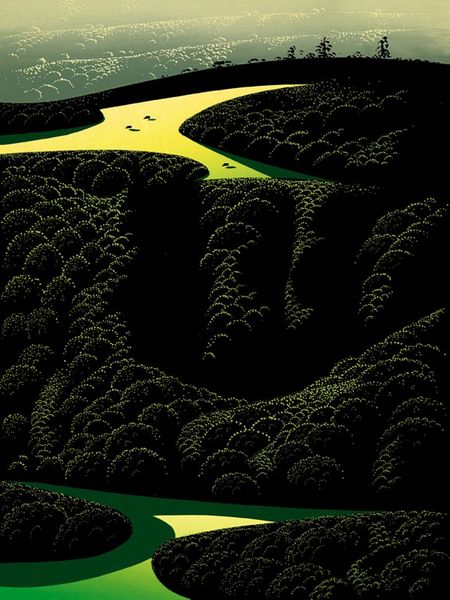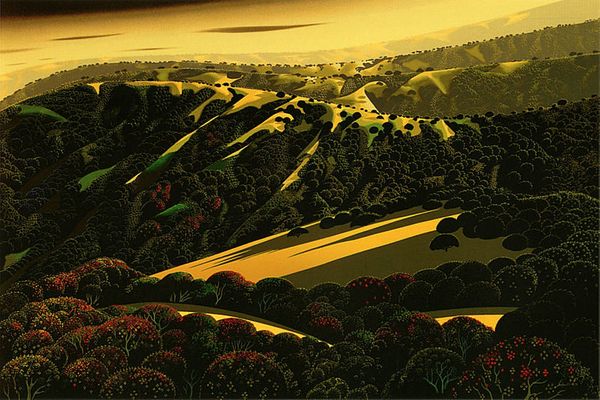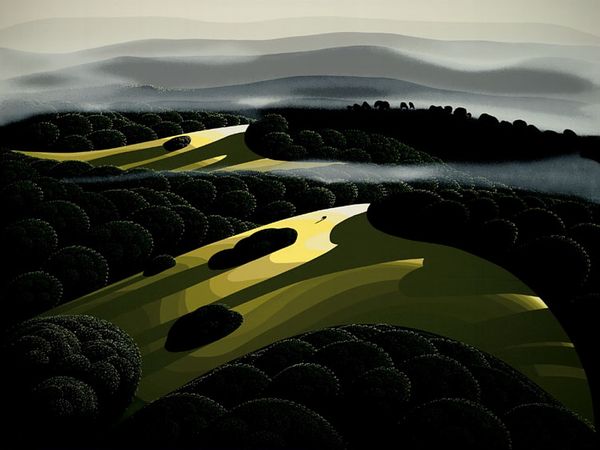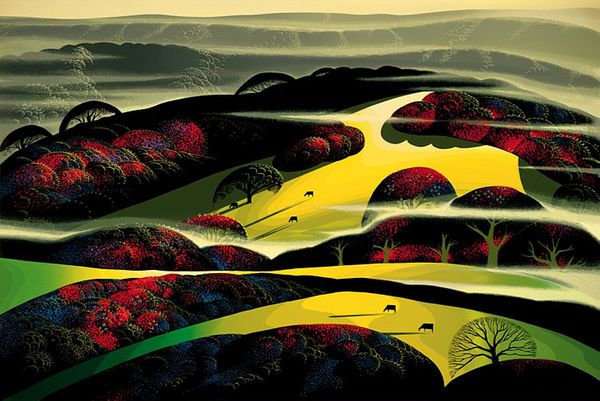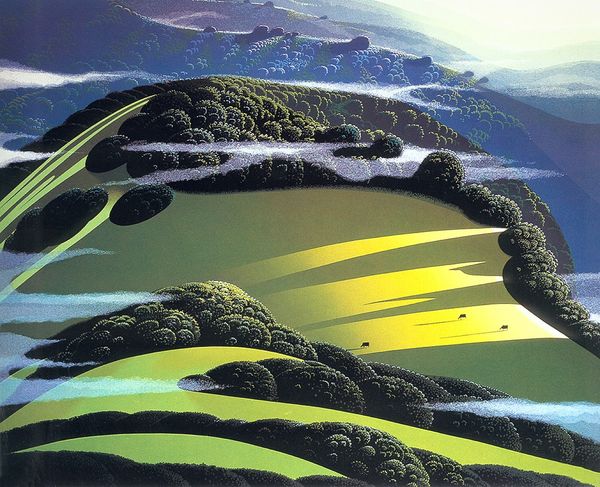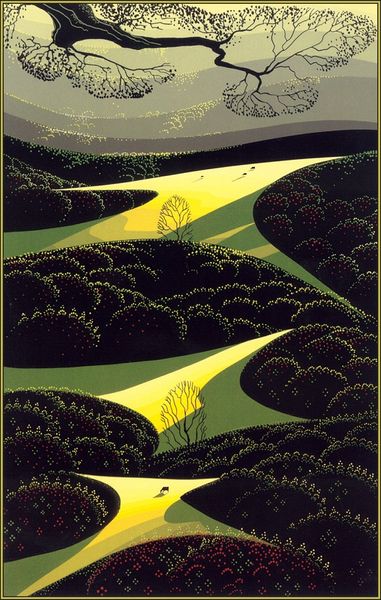
plein-air, acrylic-paint
#
plein-air
#
landscape
#
acrylic-paint
#
geometric
#
abstraction
Copyright: Eyvind Earle,Fair Use
Curator: Looking at "Valley," created in 1974 by Eyvind Earle, I'm struck by its powerful simplicity. What's your immediate reaction to this abstracted landscape? Editor: It's a surprisingly graphic composition! The stark contrasts between the dark foliage and the bright yellow valley floor create an almost surreal effect. And the smooth gradients of color in the sky—they give it such a modern feel. Curator: Earle was known for blending realism with a distinctive stylized aesthetic. The mid-20th century saw an increasing fascination with idealized landscapes. How does this fit, or perhaps challenge, the historical moment in its portrayal? Editor: While landscape painting traditionally aimed to capture naturalistic beauty, this deviates sharply. Note the hard lines defining shapes and the way light is depicted. The geometric forms and simplified shapes lead me to see this as more of an emotional space rather than any real place. Curator: Precisely. Consider also how Earle had spent a decade creating backgrounds for Disney, influencing popular imagination about landscapes. Do you feel those cinematic expectations come into play here? Editor: It’s definitely theatrical! It’s easy to envision this backdrop in, say, Sleeping Beauty. The stylized trees and intensely colored planes evoke fantasy much more readily than objective nature. It’s pushing boundaries. Curator: But it does present nature in a more flattened, simplified format. Perhaps it also presents nature as a source of graphic power and abstracted calm? Editor: True. Ultimately, this image captures an inner landscape through its striking visuals. Curator: I think it encapsulates something of the utopian spirit of the period, its optimistic abstraction allowing nature to shine while inviting the viewer to actively complete the image in their own mind.
Comments
No comments
Be the first to comment and join the conversation on the ultimate creative platform.
